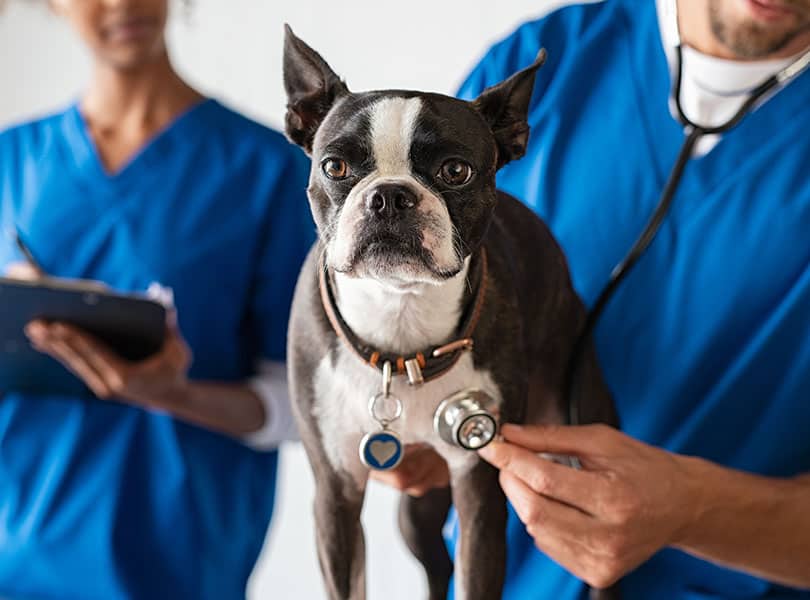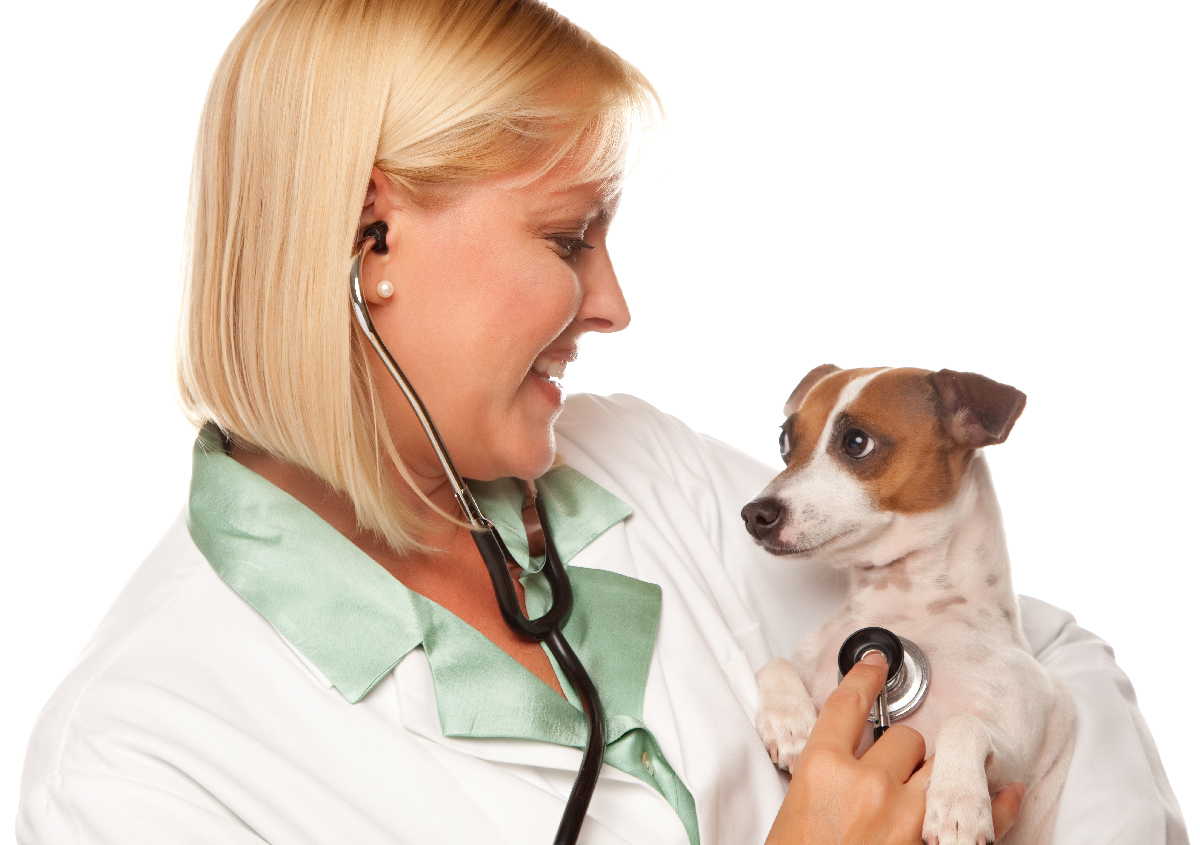What You Need to Understand About Veterinary Solutions: A Summary of Diagnostic Equipments and Procedures
Veterinary solutions play a crucial duty in maintaining the wellness of family pets. Regular examinations can reveal hidden health issues at an early stage. Different diagnostic devices and procedures, such as blood examinations and imaging methods, provide necessary understandings right into an animal's health. Recognizing these approaches is vital for pet dog owners. What certain diagnostic procedures are most commonly made use of, and exactly how can they influence a family pet's therapy plan?
Value of Normal Vet Examinations
While lots of pet dog owners may ignore the importance of normal veterinary check-ups, these appointments are necessary for maintaining a pet's overall wellness. Regular brows through to the vet permit very early detection of prospective health issues prior to they rise right into significant problems. Routine examinations commonly consist of vaccinations, which are very important for protecting against infectious illness that might drastically impact a family pet's well-being. Additionally, these appointments offer an opportunity for vets to evaluate the pet's weight, oral health, and overall problem, ensuring that the pet dog is flourishing. Throughout these sees, animal proprietors can also obtain beneficial advice on diet, workout, and preventive treatment tailored to their certain pet's needs.
Usual Analysis Treatments in Veterinary Medicine
In veterinary medication, accurate medical diagnosis is essential for efficient therapy. Common analysis procedures consist of blood testing strategies, progressed imaging innovations, and urinalysis, each playing a considerable function in determining health issues. Understanding these approaches boosts the capacity to provide proper treatment for pet individuals.
Blood Evaluating Techniques
Blood testing methods work as vital analysis tools in vet medicine, making it possible for vets to analyze the wellness of animals precisely. These methods involve accumulating blood examples to analyze different parts, such as red and white blood cells, platelets, and biochemical markers. Usual examinations consist of complete blood counts (CBC), which review overall wellness and detect infections, and biochemical panels, which analyze organ function and metabolic status. Furthermore, serological tests can determine details diseases through antibody discovery. Blood screening is minimally intrusive and gives important info that aids in detecting problems, keeping an eye on wellness standing, and examining responses to therapies. In general, these techniques play a vital role in ensuring optimal take care of pet dogs and livestock alike.
Imaging Technologies Used
Diagnostic imaging technologies are essential tools in vet medicine, matching blood screening techniques by supplying visual insights into a pet's interior structures. Usual imaging modalities include X-rays, which work for assessing bone cracks and identifying international items, and ultrasound, which permits real-time visualization of soft tissues and organs. Magnetic vibration imaging (MRI) offers comprehensive photos of complicated physiological locations, particularly in neurological evaluations. Computed tomography (CT) gives cross-sectional photos, improving analysis precision for different conditions. Each of these innovations aids vets in diagnosing illnesses, preparing treatments, and keeping an eye on recovery. By including imaging modern technologies, vet experts can much better assess a pet's health and make educated decisions regarding their treatment.
Urinalysis and Diagnostics
Urinalysis serves as a critical analysis device in vet medicine, providing important understandings right into an animal's overall wellness and helping in the detection of different conditions. This non-invasive procedure examines pee examples to assess kidney feature, hydration standing, and metabolic disorders. Typical parts examined consist of specific gravity, pH levels, sugar, proteins, and the presence of blood or microorganisms. Unusual searchings for can suggest concerns such as urinary system system infections, diabetic issues mellitus, or kidney disease. To improve diagnostic accuracy, urinalysis is commonly done along with other examinations, such as blood job and imaging studies. Early detection through urinalysis can lead to timely treatments, enhancing the diagnosis for several vet people. It is a necessary element of extensive vet care.
Comprehending Blood Examinations and Research Laboratory Evaluation
Comprehending blood examinations and lab evaluation is essential in veterinary medication as it assists in identifying various health conditions in animals. Various sorts of blood tests give necessary info concerning an animal's interior state, while analyzing laboratory results requires careful consideration of numerous aspects. This area will certainly discover the sorts of blood examinations offered and the relevance of their results.
Sorts Of Blood Examinations
Blood examinations play an essential function in vet medicine, offering crucial insights right into an animal's wellness standing. Various types of blood tests are made use of, each serving various purposes. Full blood matters (CBC) evaluate overall wellness and discover conditions such as anemia or infection. Biochemical accounts examine body organ feature by gauging enzymes and electrolytes, using insights into metabolic health and wellness. Serological tests identify certain antibodies or microorganisms, helping in the diagnosis of infections or autoimmune illness. Blood typing guarantees risk-free transfusions, while coagulation tests assess the blood's capacity to embolisms, vital for procedures. These examinations collectively enhance medical diagnosis, therapy planning, and tracking of an animal's wellness, highlighting the value of comprehensive lab analysis in vet treatment.

Interpreting Laboratory Results
An extensive analysis of laboratory results is essential for exact diagnosis and therapy in vet medicine. Interpreting lab results requires an understanding of normal referral varieties and the relevance of variances. Blood examinations can expose numerous health indications, such as body organ feature, electrolyte equilibrium, and the existence of infections. Vets have to take into consideration the entire scientific image, consisting of the pet's background, physical assessment searchings for, and any type of signs presented. Variations in results might occur from elements such as age, type, and underlying wellness conditions. As a result, lab outcomes must not be watched in news seclusion yet rather as component of a comprehensive analysis method. Precise interpretation enables customized therapy plans and far better results for veterinary clients.
Imaging Techniques: X-rays, Ultrasounds, and Beyond
Imaging strategies are important devices in vet medicine, offering critical understandings right into the wellness and health of pets. Among one of the most frequently made use of approaches are X-rays and ultrasounds. X-rays are important for envisioning bone structures, aiding vets determine fractures, tumors, or foreign things. This technique is non-invasive and fast, making it ideal for urgent situations.Ultrasounds, on the other hand, make use of audio waves to develop pictures of soft cells and organs. This technique is especially valuable for examining the heart, abdominal area, and reproductive organs, allowing vets to examine conditions like liquid buildup or body organ abnormalities.Beyond X-rays and ultrasounds, progressed imaging methods such as computed tomography (CT) and magnetic resonance imaging (MRI) are increasingly used in veterinary technique. These approaches offer in-depth cross-sectional images, boosting the accuracy of diagnoses and therapy plans. Board Certified Veterinary Cardiologist. Overall, imaging strategies play an essential duty in guaranteeing effective veterinary care
The Duty of Biopsies in Diagnosing Animal Health And Wellness Issues
Precision in detecting health and wellness problems in pets commonly rests on the use of biopsies, which provide clear-cut information about cells problems. A biopsy involves the elimination of a tiny sample of tissue for evaluation under a microscope, enabling vets to recognize numerous problems, including infections, growths, and inflammatory conditions. This diagnostic device is essential for differentiating between benign and malignant developments, directing treatment decisions, and reviewing the extent of a condition.Biopsies can be performed using different techniques, such as needle desire, incisional biopsies, or excisional biopsies, depending upon the area and sort of cells included. The selection of technique may influence healing time and the amount of tissue collected. Inevitably, the info gleaned from a biopsy can result in targeted treatments, enhancing end results for pet dogs facing serious wellness difficulties. Vets highlight the relevance of this treatment in achieving precise medical diagnoses and efficient therapy plans.
Advanced Diagnostic Tools: Endoscopy and CT Scans

Advanced analysis devices, such as endoscopy and CT scans, play a necessary duty in contemporary vet medicine, supplying non-invasive techniques to envision interior structures and identify various problems in animals. Endoscopy includes making use of an adaptable tube equipped with a cam, permitting veterinarians to take a look at the intestinal system and respiratory system straight. This technique can expose problems such as tumors, foreign bodies, or swelling, making it possible for targeted therapy plans.CT scans, on the other hand, use advanced imaging technology to create detailed cross-sectional photos of the body (Ultrasound For Dogs). This technique is especially helpful for assessing facility structures like the mind, spinal column, and joints. By giving high-resolution images, CT scans aid vets in determining problems that might not be noticeable with conventional radiography. Together, these sophisticated devices boost diagnostic precision, enhance treatment results, and inevitably add to better general pet dog click for source wellness management

Analyzing Test Outcomes: What Family Pet Owners Need To Know
Comprehending examination outcomes can be a challenging task for pet proprietors, specifically after sophisticated treatments like endoscopy and CT scans have actually been done. Analyzing these outcomes requires an understanding of clinical terms and a clear understanding of what the searchings for suggest concerning the family pet's health and wellness. Vets typically offer explanations, yet the complexity of the outcomes can still cause confusion.Pet owners need to actively participate in discussions with their veterinarians, asking questions to clarify any type of unpredictabilities. It is important to comprehend typical versus unusual outcomes and the implications for the pet's therapy plan. Additionally, identifying that some results might call for more testing or tracking can assist proprietors remain educated about their pet's health trip. Inevitably, a collective approach between animal owners and vet specialists promotes much better health end results and boosts the overall treatment experience for family pets.
Frequently Asked Questions
Exactly how Do I Pick the Right Vet Clinic for My Animal?
Picking the best vet facility includes researching neighborhood options, assessing certifications, visiting facilities, and assessing personnel interactions (Ultrasound For Dogs). Focusing on suggestions from relied on resources can help assure the most effective treatment and setting for an animal's health needs
What Should I Do if My Animal Refuses to Go to the Vet?
When a pet rejects to go to the veterinarian, it's advisable to stay tranquil, usage deals with or playthings to entice them, and take into consideration setting up a home go to if anxiousness lingers. Patience and positive support are essential.
Are There Telehealth Options for Vet Services?
Telehealth alternatives for vet services are progressively readily available, enabling pet dog owners to consult with veterinarians see this site from another location. These services make it possible for discussions regarding wellness concerns, suggestions on minor conditions, and follow-ups without needing to visit a clinic.
Just how Frequently Should My Pet Dog Have Oral Check-Ups?
The frequency of dental exams for family pets usually relies on their age and type. Usually, vets advise yearly dental examinations, although some animals might call for even more regular sees to keep optimal oral wellness.

What Are the Prices Related To Veterinary Diagnostics?
The prices connected with veterinary diagnostics can vary extensively, commonly ranging from fundamental examinations like blood work to advanced imaging techniques. Elements influencing expenditures consist of the clinic's area, devices used, and certain tests required for each and every pet. Veterinary services play an essential duty in preserving the health and wellness of pet dogs. While numerous pet dog owners might underestimate the significance of regular veterinary examinations, these appointments are vital for keeping a pet's overall health and wellness. Additionally, these appointments offer an opportunity for vets to examine the animal's weight, oral wellness, and general problem, making certain that the animal is flourishing. Accuracy in detecting health and wellness problems in animals often pivots on the usage of biopsies, which supply definitive information regarding tissue irregularities. Additionally, acknowledging that some outcomes may require more testing or surveillance can aid proprietors remain informed about their pet dog's wellness trip.